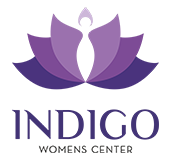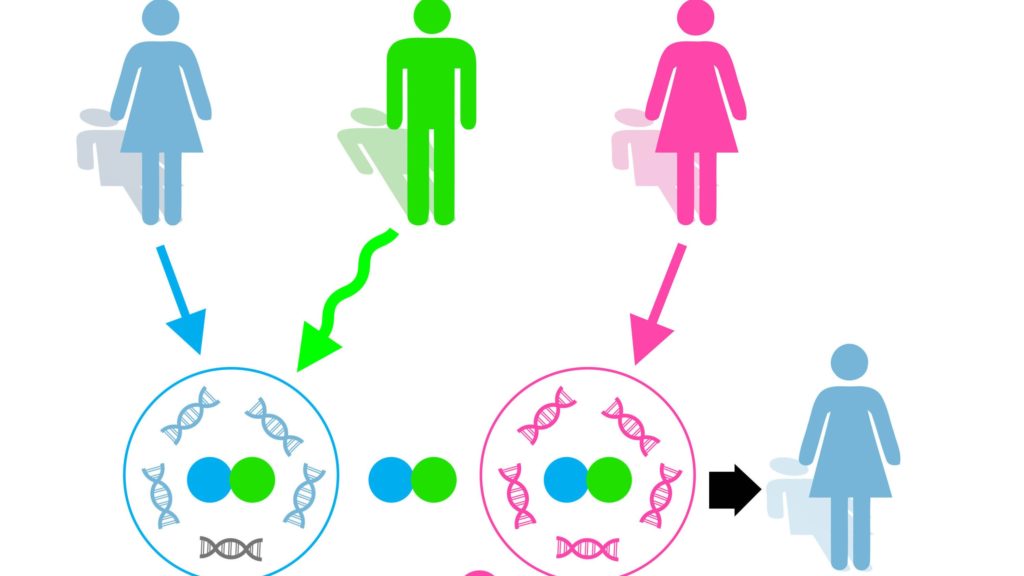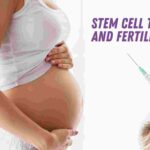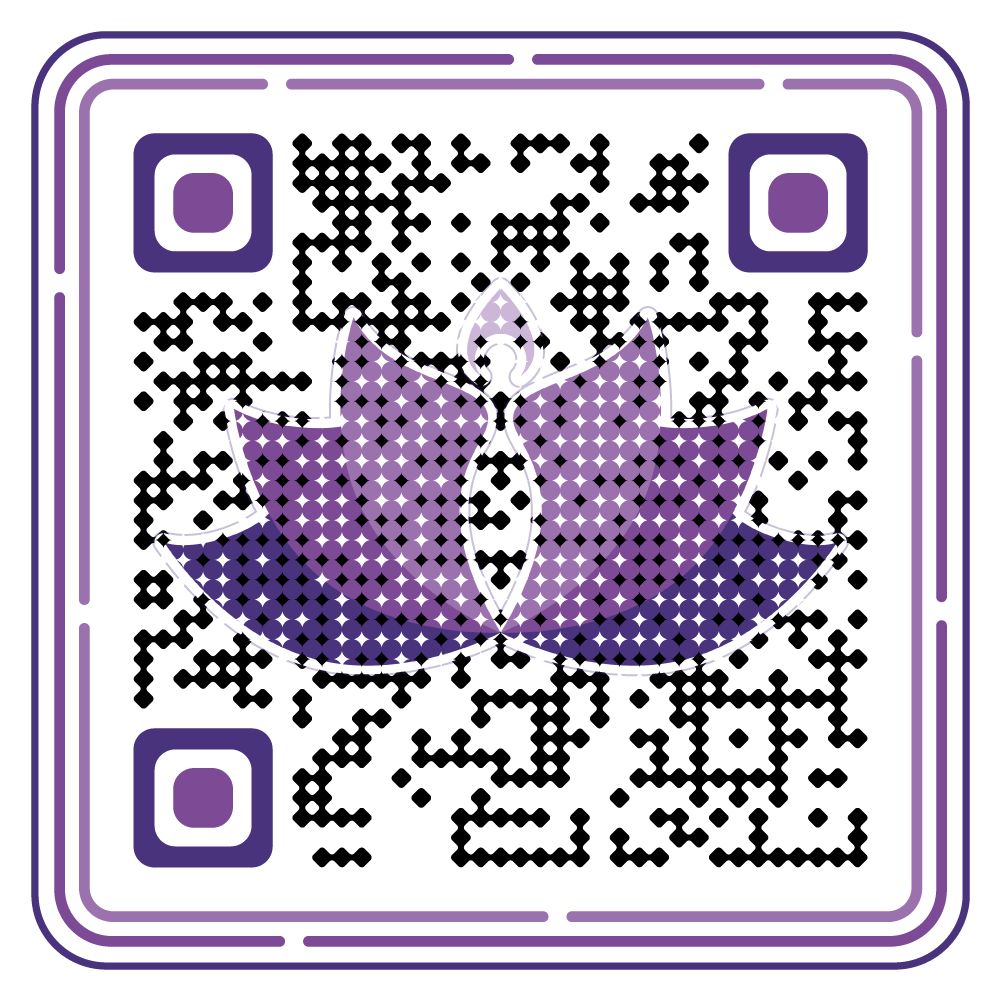Three-Parent IVF using mitochondrial replacement therapy (MRT) is an innovation , giving hope to those families with inheritable mitochondrial disorders that they may be able to have healthy offsprings . This technology has enabled us to get rid of certain fatal diseases to be inherited from one generation to another.
In brief the technique uses electrofusion to transfer the nuclear genome from the mother’s egg (leaving behind most of the mother’s mitochondria) to the cytoplasm of a donor egg containing only healthy mitochondria. This egg is then fertilized by the father’s sperm and transferred to the mother’s womb. Mitochondria contain DNA (37 genes), but this DNA is completely separate from the genetic material in the cell nucleus that is inherited from both parents.
Mitochondrial diseases are a group of disorders caused by dysfunctional mitochondria, the power house of the cell. Nuclear DNA has two copies per cell (except for sperm and egg cells), one copy being inherited from the father and the other from the mother. Mitochondrial DNA, however, is strictly inherited from the mother.
Some examples of mitochondrial diseases include:
- Mitochondrial myopathy
- Diabetes mellitus and deafness (DAD)
- this combination at an early age can be due to mitochondrial disease
- Leber’s hereditary optic neuropathy (LHON)
- visual loss beginning in young adulthood
- eye disorder characterized by progressive loss of central vision due to degeneration of the optic nerves and retina
- Leigh syndrome, subacute sclerosing encephalopathy
- after normal development the disease usually begins late in the first year of life, although onset may occur in adulthood
- a rapid decline in function occurs and is marked by seizures, altered states of consciousness, dementia, ventilatory failure
- Neuropathy, ataxia, retinitis pigmentosa, and ptosis (NARP)
- progressive symptoms as described in the acronym
- dementia
- Myoneurogenic gastrointestinal encephalopathy (MNGIE)
- gastrointestinal pseudo-obstruction and neuropathy
- Myoclonic Epilepsy with Ragged Red Fibers (MERRF)
- progressive myoclonic epilepsy
- “Ragged Red Fibers” are clumps of diseased mitochondria that accumulate in the subsarcolemmal region of the muscle fiber and appear when muscle is stained with modified Gömöri trichrome stain
- short stature and hearing loss
- lactic acidosis
- Mitochondrial myopathy, encephalomyopathy, lactic acidosis, stroke-like symptoms (MELAS)
At least 1 in 5000 people in the general population has one mutation in mtDNA, which can cause the above mentioned mitochondrial dysfunction.The severity of clinical symptoms is often associated with the level of mtDNA mutation load or degree of heteroplasmy.
Recent studies show that two techniques can be used to carry out nuclear transfer for mitochondrial replacement therapy: metaphase II (MII) spindle transfer and pronuclear transfer.
Maternal Spindle transfer Technique:
In MST, an oocyte is removed from the recipient, and when it is in the metaphase II stage of cell division, the spindle-chromosome complex is removed; some of cytoplasm comes with it, so some mitochondria are likely included. The spindle-chromosome complex is inserted into a donor oocyte from which the nucleus has already been removed. This egg is fertilized with sperm, and allowed to form a blastocyst, which can then be investigated with preimplantation genetic diagnosis to check for mitochondrial mutations, prior to being implanted in the recipient’s uterus.
Pronuclear transfer technique:
In pronuclear transfer, an oocyte is removed from the recipient, and fertilized with sperm. The donor oocyte is also fertilized with sperm from the same person. The male and female pronuclei are removed from each fertilized egg prior to their fusing. The pronuclei from the recipient’s fertilized egg are inserted into the fertilized egg from the donor. Preimplantation genetic diagnosis is not possible prior to implantation .
These techniques has got regulatory constraints in countries in which reproductive techniques are subject to legal oversight. Pronuclear transfer leads to discarding of zygotes and may raise religious and ethical concerns in certain populations. This makes the spindle transfer technique preferable to pronuclear transfer.
Experimental nuclear transfer in both animals and humans has been reported, and our group as well as others has worked on this for over 2 decades.
In 1996 in the United States, Livingston, New Jersey cytoplasmic transfer was used for the first time in a human assisted reproduction procedure. In total as of 2016, 30-50 children worldwide had been reported to have been born using cytoplasmic transfer.
In 2002, the FDA informed clinics that they considered the cytoplasmic transfer technique as a new treatment, and, it would require an Investigational New Drug (IND) application. For this gradually the research team disbanded and the procedure fell out of favor.
In 2009, a team in Japan published studies of mitochondrial donation. In the same year, a team led by scientists at Oregon Health & Science University published results of mitochondrial donation in monkeys; that team published an update reporting on the health of the monkeys born with the technique, as well as further work it had done on human embryos.
Human trials in oocytes in 2010 by Craven, et al. were successful in reducing transmission of mutated mtDNA. This research did not extend past the blastocyst stage because of ethical concerns.
In the United Kingdom, after many considerations the Human Fertilisation and Embryology Regulations were passed in 2001 regulating and allowing research into human embryos. Finally licence was granted in 2005. Following further research by Newcastle and the Wellcome Trust, scientific review, public consultations, and debate, the UK government recommended that mitochondrial donation be legalized in 2013. In 2015 parliament passed the Human Fertilisation and Embryology (Mitochondrial Donation) Regulations, which came into force on 29 October 2015, making human mitochondrial donation legal in the UK. The HFEA Safety Committee issued its fourth report in November 2016 recommending procedures under which HFEA should authorize MRT, the HFEA issued their regulations in December 2016 and granted their first licence (to Newcastle University) in March 2017.
Douglass Turnbull, the driving force behind mitochondrial research at Newcastle University, was awarded a knighthood in 2016.
In 2016, John Zhang and a team in New York used the spindle transfer technique to help a Jordanian woman to give birth to a healthy baby boy in Mexico where there was no law against using such a technique. The mother had Leigh disease and already had four miscarriages and two children who had died of the disease.
Valery Zukin, director of the Nadiya clinic in Kiev, Ukraine, reported in June 2018 that doctors there had used the pronuclear transfer method of MRT to help four women give birth (three boys and a girl), three women to become pregnant (one from Sweden) and had 14 failed attempts. In January 2019 it was reported that seven babies had been born using MRT. The doctors had first got approval from an ethical committee and a review board of the Ukrainian Association of Reproductive Medicine and the Ukrainian Postgraduate Medical Academy, under the auspices of the Ukrainian Ministry of Healthcare, but there was no law in the Ukraine against MRT.
In January 2019, Embryotools, Barcelona, Spain announced that a 32-year-old Greek woman had become pregnant using the spindle transfer technique. MRT was not legal in Spain so they had performed the trial in Greece where there was no law against MRT.
In June 2018 Australian Senate’s Senate Community Affairs References Committee recommended a move towards legalising MRT and in July 2018 the Australian senate endorsed it. In all states, legislation prohibited the use of MRT techniques in the clinic, and except for Western Australia, research on a limited range of MRT was permissible up to day 14 of embryo development, subject to a license being granted.
Safety And Ethics:
Three Parent Baby, despite off the promising outcomes raises ethical and social concerns. There is modification of the germline, and that modified germline would be passed on to subsequent generations.
Using human embryos for in vitro research is also controversial, as embryos are created specifically for research and the financial compensation of egg donors. Another ethical concern is the identity implication interfering with the psychological and emotional impacts on a child’s life and future. The issue is whether the genetic make-up of children born will affect their emotional status when they are aware that they are different from other healthy children conceived from two parents.
Cytoplasmic transfer initially was intended for the treatment of infertility, techniques developed later were aimed primarily at preventing the transmission of mitochondrial disease.
Critics argue that scientists are “playing God” and that children with three genetic parents may suffer both psychological and physical damage. They also claimed that the techniques would lead to the generation of “designer” babies, though many scientists consider that possibility to be exceedingly remote.
The impact of mitochondrial manipulation on heredity remains unknown. However, because mtDNA is passed along to offspring, crossing the germ line, reproductive techniques that involve donor mtDNA have the potential to alter the course of family ancestry. Little is known about the legal, psychological, and social ramifications for the child of three genetic parents.





